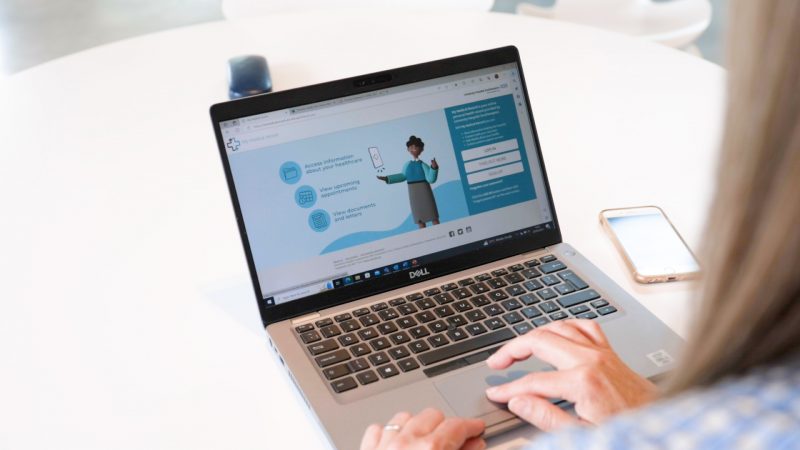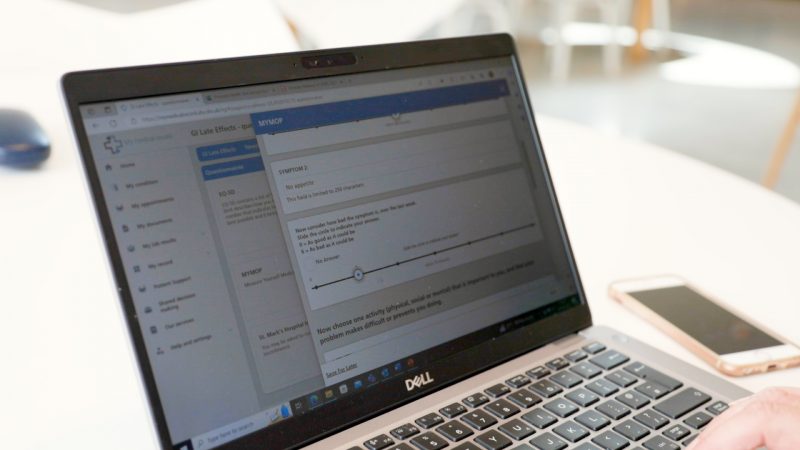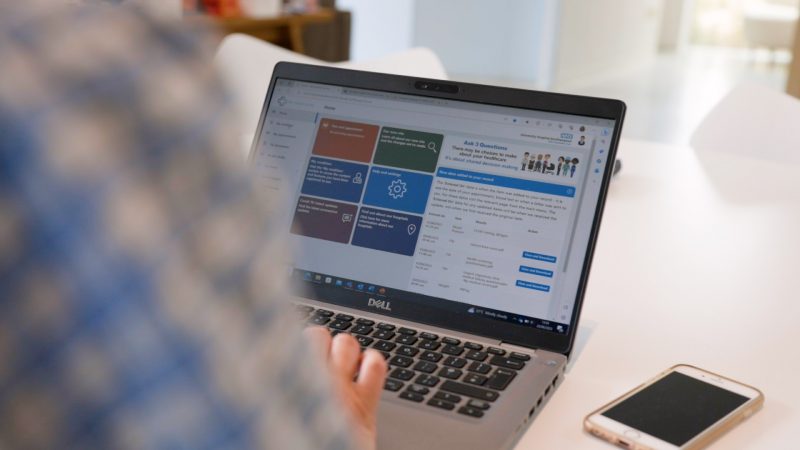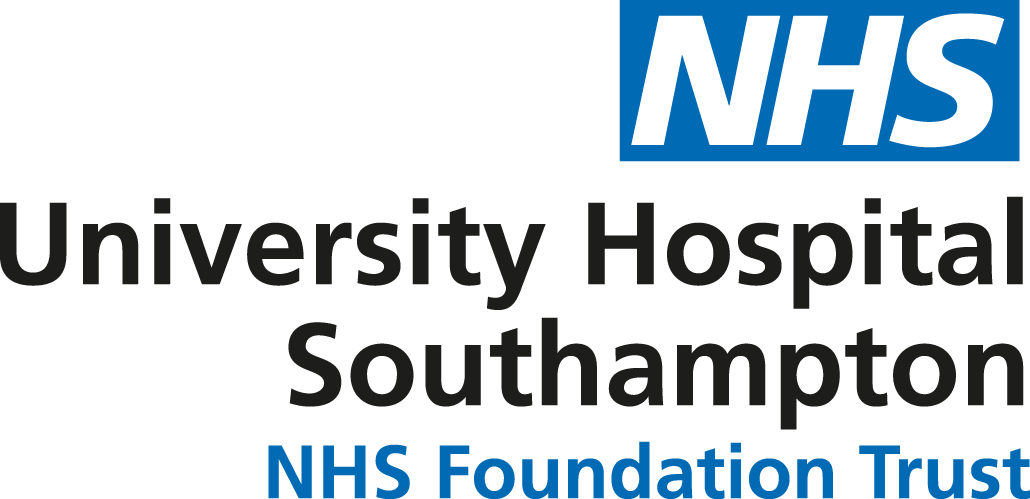University Hospital Southampton is pioneering the use of digital platforms to let patients co-manage their care.
Online personal health system ‘My Medical Record’ is the ideal tool for cancer patients to manage their follow up, explains Claire Marsh, award-winning Registered Nurse and Cancer PIFU Project Lead.

Patients can log into My Medical Record on their computers or phones
What is My Medical Record?
My Medical Record is an online personal health record provided by University Hospital Southampton.
It is a free, secure platform that is available as a website and as an app for patients’ phones or tablets.
The app version can be downloaded from the Apple App Store or as an Android app.
With My Medical Record, patients can do a lot of things such as connect with their care teams, view details of outpatient appointments and view documents and letters.
It can also be used by patients with specific long-term conditions to help them manage that condition and their treatment for it.
For example, it can allow them to see the results their blood tests or provide them with specific information related to the condition they are living with.
My Medical Record in cancer care
As a specialist nurse in cancer care, I work with the digital teams at UHS to provide clinical expertise in developing the version of My Medical Record that is designed specifically for the needs of cancer patients.
Within cancer care, we use My Medical Record to help us manage our patients and their follow up after they’ve completed all of their cancer treatment.
The pages on the My Medical record for cancer patients are designed with the clinical team and the My Medical Record digital team to provide specific cancer information and to provide blood test results available to our patients.
We also have a messaging function, that is much like email, within the system, which enables the patients to communicate directly with their clinical team when they need to.
One of the most important functions of My Medical Record for cancer patients at UHS is to help them manage their follow up after receiving treatment.
Watch Claire talk about My Medical Record and PIFU
What is PIFU?
At UHS we are strong supporters of the Patient Initiated Follow Up, or PIFU, approach to follow up.
PIFU means that we give patients themselves the flexibility to arrange their follow-up appointments as and when they need them.
It is about empowering our patients so that they initiate their appointments when they need one, based on their symptoms and individual circumstances.
At UHS we combine this approach with the use of technology where appropriate so that patients use the My Medical Record platform to manage their follow up.
Managing PIFU remotely and digitally can have many benefits for both patients and clinical teams.
Southampton Hospital is a regional cancer centre so often our patients would have to travel quite some distance just to complete a traditional routine face-to-face appointment, but by communicating through My Medical Record and providing information digitally, patients can avoid having to make long and unnecessary journeys.

Cancer patients have their own dedicated version of My Medical Record designed for their needs
PIFU and My Medical Record
We have been using My Medical Record for nearly ten years to help cancer patients manage their condition, and we currently have eight cancer-specific sites for patients on those cancer treatment pathways.
If a patient decides that they would like to be a digital, My Medical Record patient, then we have nurse specialists or cancer support workers who provide support to the patient to create an account and introduce them to all of the facilities and functionality on the My Medical Record.
Some of our cancer sites run specific workshops to introduce PIFU and the self-management role that the patient has to undertake.
However, we know that not all patients want to use the digital facilities so traditional methods of communication and follow up continue to run.
It’s also important to stress that even though the PIFU approach means that patients themselves are responsible for co-managing their condition, the patient’s care remains the responsibility of the clinical team and the hospital here at Southampton.
Even though the patient is not returning to see us for routine, face-to-face, they still may run into some problems or have concerns or actually need to have direct contact with the clinical team.
And that’s the joy of using a digital system where a patient can use the messaging, which is very similar to email, to make contact with their clinical team when it’s right for them.
If a patient runs into problems or has a concern, they can communicate that to us by picking up the phone or using the messaging function in My Medical Record and there is a recall pathway so that patient can be brought in and seen extremely quickly, normally within two-four weeks.
In this scenario, we can also get any extra tests or investigations done before their face-to-face appointment.
This is really beneficial because then we have all the information so decisions can be made with the patient as to what is the cause of the problem or the next steps.

Patients can use My Medical Record to contact their care teams
Future steps
I feel privileged to have been part of the design and rollout of this approach to digital healthcare.
There is no doubt that we will see more and more new digital and technological systems coming along to enhance our clinical practice.
I think as nurses some of us are quite worried and frightened about digital and it taking over or being a slight barrier to us giving our patient care
However, I am always an advocate to say this is to support our clinical systems and support our clinical work because it can be really quite timesaving and also enhance our patient care.
And we have to remember that we have to encourage our patients to be so much more part of their healthcare nowadays because they have to be involved to take a lead on that with us.
